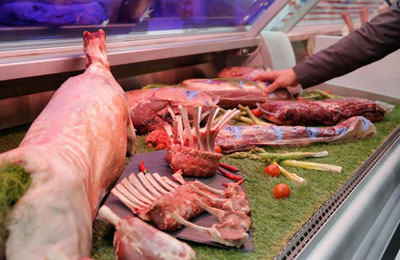
Dubai as 'hub' for global foodstuff commodities trade
DUBAI, January 7, 2015
A leading investment platform and international business facilitator is poised to play a key role in enhancing Dubai’s global position as an inclusive, transparent and compliant marketplace for the foodstuff commodities trade.
The 20th edition of Gulfood, an annual food and hospitality show, will run from February 8 to 12 February 2015 at Dubai World Trade Centre (DWTC) and is forecast to accelerate the emirate’s already brisk trade in commodities, in addition to finished food products.
Owing to its strategic location for major global markets, its developed logistics infrastructure and efficient customs service, as well as hosting the world’s largest annual food trade event, Dubai has become a well-connected, cost-effective global gateway for foodstuff commodities trade, said a statement.
This includes trade in commodities such as rice – the UAE is the world’s largest re-exporter of rice, importing rice from 32 countries and exporting it to more than 80 countries globally.
It is also the world’s biggest re-exporter of tea, with many of the world’s largest producers and brands using Dubai as their base. The Dubai Multi Commodities Centre (DMCC) expected to facilitate more than 7.5 million kilogrammes of tea re-exports by the end of last year.
According to recent figures released by Dubai Customs, Dubai’s foodstuff foreign trade including imports, exports and re-exports amounted to Dh21.5 billion ($5.8 billion) in the first quarter of last year, equating to 17 per cent growth on the Dh18.3 billion recorded in the corresponding period in 2013.
This growth reflects the increase in demand due to economic and population growth, as well as the capacity of the local market to accommodate high volumes of foodstuffs.
In this context, Gulfood will feature a renewed focus on commodities – meat, rice, grains, nuts, vegetable oil, coffee, milk, tea and will play an essential role in generating increased revenues from global food transactions across the UAE and specifically in Dubai.
Trixie LohMirmand, senior vice president, Exhibitions and Events Management, DWTC, said: “By providing a convenient and strategic meeting platform for traders and investors from around the world, Gulfood is perfectly positioned to facilitate food trade through Dubai and contribute to the growth and development of the UAE’s increasingly diverse economy.
“Focusing on providing traders and investors with real added value, the 20th edition of the show will be more influential than ever with business transactions expected to reach an all-time high.”
The biggest edition in the show’s history, Gulfood 2015 is expected to attract more than 4,800 international companies from 120 countries and over 85,000 visitors from 170 countries.
With billions of dollars’ worth of trading reported by exhibitors via their participation at last year’s show, the US pavilion alone - with almost 200 companies participating - generated show-floor and legacy sales of more than $300 million.
Other countries with a long history of Gulfood participation including Australia, Brazil, Egypt, Italy, France, South Africa and Germany also reported excellent results and acknowledged the unprecedented global reach of the busiest show to date.
According to Dubai Exports, Dubai is favourably placed to meet the growing demand for dried foods in Asia-Pacific and for pasta in Western Europe, with both regions witnessing strong demand for vegetable oil.
With quality of produce, Halal standards and freshness being of paramount importance, the regional market potential is strong for commodities, including the global meat industry.
According to the Alpen Capital GCC Food Industry Report, the consumption of meat is expected to grow faster than any other food product through to 2017 at an average annual growth rate of of 3.9 per cent, followed by fruits, vegetables, milk and cereals.
Due to significant shifts in consumption patterns, particularly in emerging regions such as the Middle East, consumers are moving from carbohydrate-based foods to protein-rich diets, including meat and dairy.
While traditional food habits still dominate, the growing GCC population – expected to exceed 50 million by 2020 - and rising affluence regional levels are leading to increased demand for premium protein-rich foods, particularly meat.
The continued growth in trade is also reflected in the demand for exhibition space at Gulfood 2015 and February’s show will span more than 127,000-sq-m of exhibition space, including a 23,000-sq-m, purpose-built temporary structure - the largest-of-its-type regionally.
Gulfood's tighter, more focused format, coupled with the staging of knowledge-exchange conferences and events, will attract hundreds of key stakeholders from across the international food industry value chain to address key topics relevant to the food industry.
The Major Buyers Lounge will provide industry’s senior business professionals with an exclusive VIP networking facility to ensure maximum networking opportunities. - TradeArabia News Service







